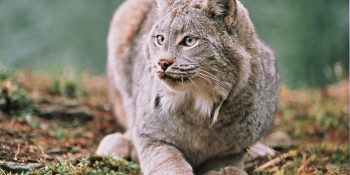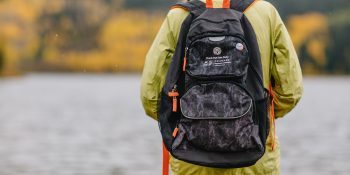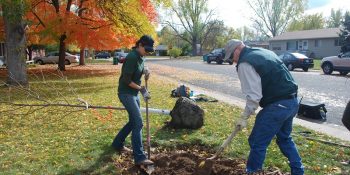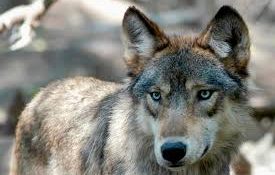DENVER – A new film released Wednesday by Colorado Parks and Wildlife showcases the ‘Shadows of the Forest’ in Colorado’s high-elevation wilderness – the Canada lynx.
The film was published on CPW’s YouTube, Facebook and Instagram channels. It tells the story of lynx in Colorado and how the big-footed felines are representatives of wild values and the natural world. The film was produced by Sean Ender of Peak to Creek films.
Part of CPW’s mission is to take care of the native species in the state. Prior to Colorado’s reintroduction of lynx starting back in 1999, no other state or Canadian province had ever completed a successful lynx reintroduction.
Colorado declared the lynx reintroduction efforts a success in 2010 and this film tells the story of that history and the research and collaborative efforts taking place with the U.S. Forest Service to protect their habitats and study the species.
“As a scientist, we’re trained to spend our lives mired in details, trying to design the perfect sampling scheme or experiment, running some complicated analysis, and attempting to publish a paper in a prestigious scientific journal,” said Jake Ivan, Wildlife Research Scientist with CPW. “That is all well and good and serves an important purpose. What’s lost in that cycle is the story our research has to tell.
“In this video, Sean does a great job of capturing that story, and conveying it in a way that is interesting, informative and captivating. I hope people will enjoy this story and along the way maybe learn a bit about lynx, hares, forest management and the research effort that goes into trying to understand it all.”
CPW is in charge of the management and monitoring of lynx in Colorado, but it is a species that lives in the national forest system. The U.S. Forest Service is really the ones providing the habitat for lynx and their primary food source, snowshoe hares.
Ender, owner of Peak to Creek films, captured some of the collaborative work taking place between CPW and the USFS. The film also showcases some of the facilitating science behind the research.
“I really enjoyed learning about the complexities and multiple layers of science at work to keep lynx on the landscape in Colorado,” Ender said. “When Jake first told me they can gather DNA from footprints in the snow I was shocked. Filming Doug tossing a giant snowball around to the point where he’s left holding a lynx track was fascinating. It’s really fun to capture moments like that in the field and share the cutting edge work CPW is doing to conserve a species they worked so hard to bring back.”
On Thursday, a second film on lynx will also be published across the same channels. That one showcases exploratory movements lynx make across Colorado and beyond, and Ivan talks about the biology of the big-footed felines.
Want more on the Canada lynx, listen to our podcast episode featuring the species.
SPREAD THE NEWS
COMMENT, Like, Follow & SHARE @I70Scout
CURRENT EDITION
WEATHER & TRAFFIC PUZZLES RECENT NEWS ADVERTISE WITH US







